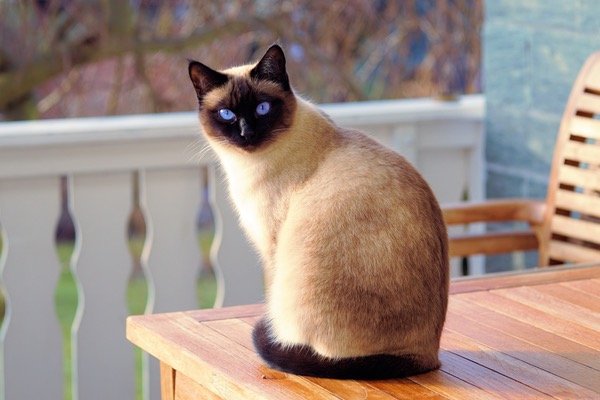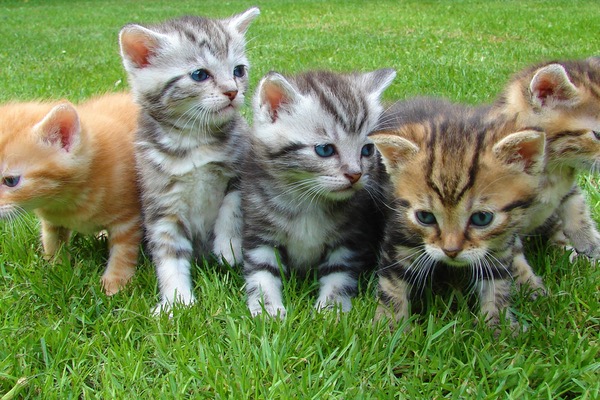5 Types of Cat Fences
5 Types of Cat Fences
Cats love exploring new places; they are playful, active and sometimes even destructive little creatures. This is the reason for people considering cats as a big threat in keeping a neat and organized house. In order to stop pets from damaging your home’s beauty integrity, you can give them a designated place outside where they’ll be safe from predators but have enough room to explore. Here, they can play about, chase after other animals and enjoy the outer world. So, how do you keep your furry friend contained?
The idea of keeping a cat contained to a backyard or enclosed run may seem far-fetched, given cat’s skills at climbing and jumping. Most normal fences or DIY fences just give cats something to climb on. However, there are now several sorts of barrier systems for cats that work to keep cats safe and contained.
Most fences use a flexible mesh and curved along the top which cats have trouble balancing on or climbing. This helps to keep cats from jumping over the fence. Apart from keeping the cat locked safely inside the yard, fencing also helps lock off wild and stray animals that may harm your pet.
There are few different forms of fences. However, it is a good idea to do some research on these types of containment systems. These can be done by reading and comparing fence reviews to enable you to get the best type of cat fence that satisfies your needs.
Free Standing Fences
These free standing barriers are made from thin mesh netting strung between metal poles. Freestanding fences as the name suggests, they can stand on their own or be installed inside an existing fence. these fences are normally curved and about 6-foot tall posts to limit the cat from jumping over.
If your cat is able to climb on this fence, it will not get over but just fall back down under its own weight. At the bottom, these fences are attached to the ground to inhibit the cat from going under and lock off other animals from getting in.
The freestanding fences are very popular since they do not necessarily need an existing fence. Another reason is their thin mesh which is not visible from a distance. It disappears into the surrounding landscape, without taking away from the look of your home and yard.
The downside of this fence may be since the mesh is thin not as strong as the traditional fence. The mesh is not intended to keep large pets such as dogs contained and may not be able to keep the larger predators out.
Add-On Cat Fencing Systems
An add-on cat retrofit, or fence enclosure, is a band of mesh or wide strip that is installed on top of an existing fence. These fencing systems are attached to the barrier by a series of brackets and create an overhang on the inside of the fence. This limits the cats from jumping the fence and provides a barrier forcing them to turn in case they climb and stay inside the yard.
These types of fencing systems provide more protection against large animals as compared to the freestanding fences, because of the structure and strength of the existing fence. They can also be installed along a wood privacy fence in a way that it will be hidden from passers-by and neighbors, with the top of the fence being below the top of the outside fence.
When you opt for this fence system, you need to ensure that the existing fence is in good condition and without holes that could allow the cat to slip through. Some customers have noted that the brackets or mesh on these fences can be damaged by heavy snow, therefore it is important to clean off the fence as soon as possible during ice storms or snow. You will need snow clips to help strengthen your fence and prevent damage to the fence from heavy, wet snow.
Wireless Cat Fences
Wireless electronic fences are another great option you can choose to keep your cat inside your yard. This type of fence is made of a wire buried in lawn and then an electronic collar is worn by your cat. The wire sends signals to the collar when the cat approaches and creates a barrier that your feline friend will not want to cross. If the cat does not heed the warning signal, it will receive a mild shock that makes it avoid the fence perimeter. This small yet effective training method teaches the cat to stay within bounds and will eventually avoid the perimeter over time.
The merit of this fence system is that there is no visible structure above ground. This makes it suitable for a fence around difficult areas, like gardens, sandboxes, or pools, without using physical barriers.
There aren’t many disadvantages but this type of electronic cat fence system does not keep other animals out. Wild and stray animals that may harm your cat are not wearing the special collars and may pass through the barrier at any time unaffected. Often times we notice a combination of the two seems to be the most effective to keep your cat safe and unwanted predators out.
Metal Fencing
Metal cat fencing is another option for your cat and is a bit different from dog metal fencing. Since cats are great jumpers and climbers, the standard metal fencing may not contain them. In order to fence in a yard area for your cat, you need to either enclose the arch or roof the fenced area inward at the top to limit the cat from jumping over the fence.
Spiky strips
These spiky strips are placed on the top around all your fences. As long as your fences are high enough, spiky strips are said to prohibit your cat from climbing over the top. Spiky strips prevent other cats from getting in your yard and may prevent any unwanted guests as well. These strips are simple and are very cost-effective options for pet containment. We’ve written more about spiky strips here if you’d like more in-depth information.
In order to give your pet a safe, effective and environment-friendly shelter, you can choose from the above-mentioned types of fences or enclosures available in the market. Here at Pet Stop, you may notice we’re experts with underground fence technology and provide solutions for training your pets effectively. With fences, you can easily change your backyard into a safe habitat for your pet; The arrangement and positioning of fences to prevent cats from jumping over fences or getting out of your yard.
As for the cost, it may differ, based on the size of your backyard and the type of fence you need. Whichever option you choose, these fences are available to protect cats from hazardous environments where they may negatively affect the health of cats.
Our Other Services:
 Pet Stop
Pet Stop Get a Free Quote
Connect with Your Local Pet Safety Experts at Pet Stop. Visit, call, or
chat with us – we’re here to help you create the ultimate safe haven for your pet.
Get a Free quote
Name *
Zip code where new fence is required *
What breed is your dog?
Preferred contact method *
Phone Number to Call/Text *
Address *
Stay Connected, Stay in Control
Brief introduction to the OT-300, highlighting remote control, real-time notifications, and easy setup through the Pet Stop Link App.
Download the App

